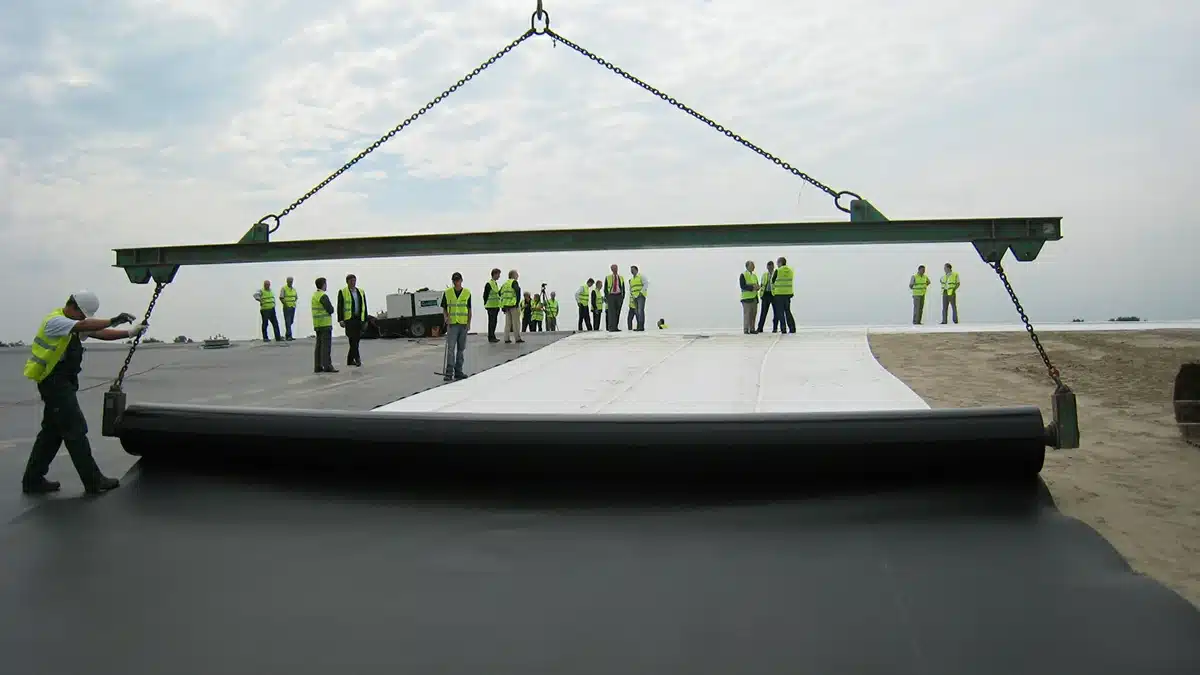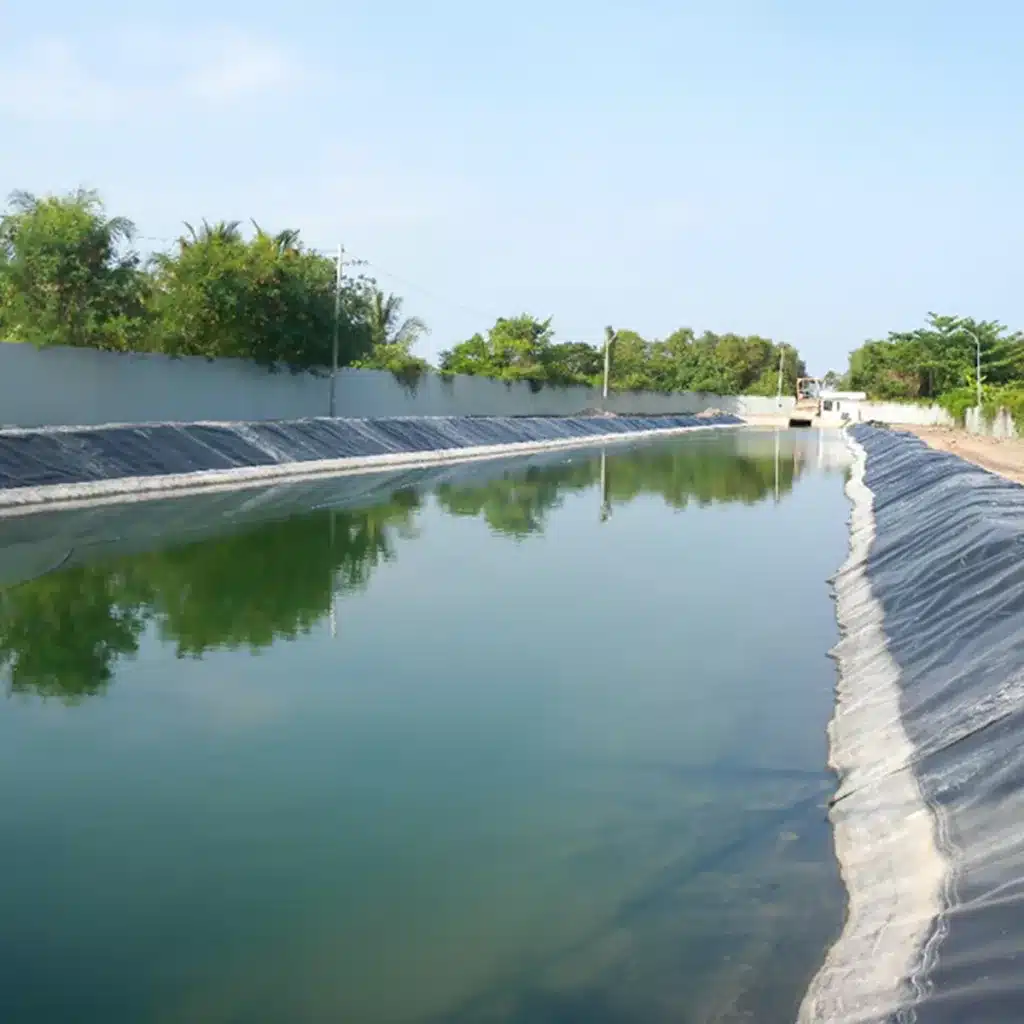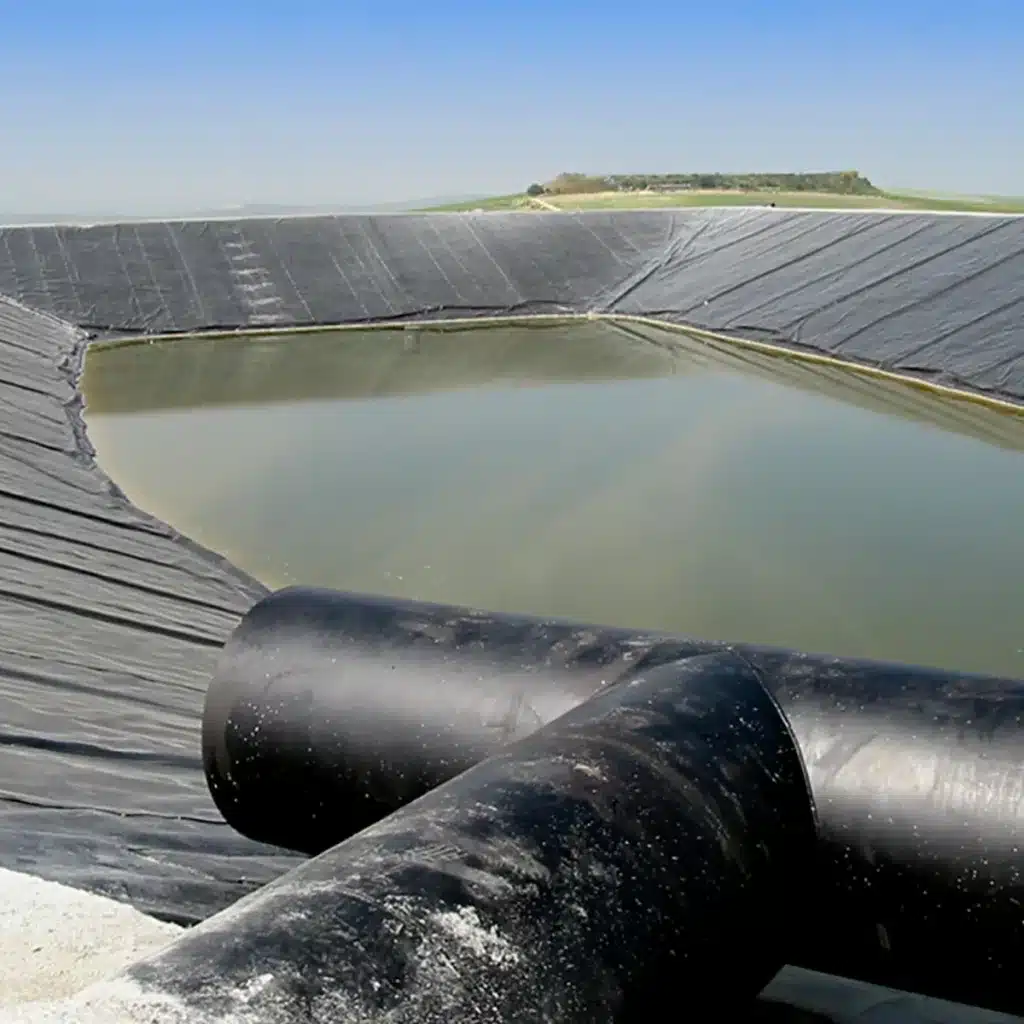+86-159 9860 6917
info@geofantex.com
geofantex@gmail.com
+86-400-8266163-44899
Geomembranes are an essential component in various environmental and industrial applications, providing a reliable barrier against liquids and gases. Among the different types of geomembranes, those with a sand finish offer unique advantages in terms of installation and performance. In this article, we’ll explore the concept of geomembrane sand finish, how these membranes are sealed, the different types of geomembranes, and the distinctions between HDPE liners, geomembranes, and GCLs.
How do you seal a geomembrane?
Sealing a geomembrane is a critical process that ensures its effectiveness as a barrier. The most common method for sealing geomembranes, especially those with a sand finish, involves a heat-welding process known as thermal welding. In this process, heat is applied to the overlapping edges of the geomembrane sheets, melting the material and bonding them together to create a seamless, watertight seal. Alternatively, chemical welding can be used, where a solvent or adhesive is applied to the geomembrane edges to bond them. Proper sealing is essential to prevent leaks and ensure the long-term performance of the geomembrane.

What are the three types of geomembranes?
Types of Geomembranes
There are several types of geomembranes, but the three most commonly used are:
| HDPE (High-Density Polyethylene) Geomembranes | Known for their durability, chemical resistance, and UV resistance, HDPE geomembranes are widely used in landfills, mining, and water containment applications. |
| LLDPE (Linear Low-Density Polyethylene) Geomembranes | These offer greater flexibility compared to HDPE, making them suitable for projects requiring adaptability to uneven surfaces or movement. |
| PVC (Polyvinyl Chloride) Geomembranes | PVC geomembranes are highly flexible and easy to install, making them a popular choice for smaller containment projects, such as ponds or decorative water features. |
Each type of geomembrane has specific properties that make it suitable for different applications, and the choice depends on factors such as the project’s environmental conditions and durability requirements.
What is the difference between HDPE liner and geomembrane?
The terms “HDPE liner” and “geomembrane” are often used interchangeably, but there is a subtle difference. An HDPE liner is a specific type of geomembrane made from high-density polyethylene. It is known for its high strength, chemical resistance, and UV stability, making it ideal for use in harsh environmental conditions. Liners like HDPE are best for chemical resistance, while LLDPE better protects products from fluctuating temperatures and UV exposure. Geomembrane, on the other hand, is a broader term that refers to any synthetic membrane used as a barrier to prevent fluid or gas migration. HDPE is just one type of geomembrane, with others made from materials like LLDPE, PVC, or EPDM (Ethylene Propylene Diene Monomer).
What is the difference between GCL and geomembrane?
GCL (Geosynthetic Clay Liner) and geomembrane are both types of geosynthetic materials used for various environmental and engineering applications, but they serve different purposes and have distinct properties:
GCL (Geosynthetic Clay Liner)
| Composition | GCLs consist of a layer of bentonite clay sandwiched between two geotextiles or between a geotextile and a geomembrane. |
| Function | They are primarily used as hydraulic barriers, providing excellent impermeability due to the swelling properties of bentonite when hydrated. |
| Applications | Commonly used in landfill liners, ponds, and as barriers in waste containment systems. |
| Installation | Typically installed in rolls and can conform to irregular surfaces, making them easier to install in some situations. |
Geomembrane
| Composition | Geomembranes are synthetic membranes made from materials like HDPE (High-Density Polyethylene), LDPE (Low-Density Polyethylene), or PVC (Polyvinyl Chloride). |
| Function | They are used primarily for waterproofing and containment, providing a barrier to prevent fluid migration. |
| Applications | Used in landfills, containment ponds, and reservoirs, as well as in environmental protection and containment projects. |
| Installation | Usually requires welding or heat fusion for seams, which can be more labor-intensive compared to GCLs. |
Key Differences
| Material | GCLs are clay-based, while geomembranes are plastic-based. |
| Permeability | GCLs have superior impermeability due to the clay layer, while geomembranes rely on the material’s thickness and integrity. |
| Applications | While there is some overlap, GCLs are often preferred for projects needing natural clay properties, and geomembranes are chosen for their mechanical strength and durability. |
Understanding these differences can help in selecting the appropriate material for specific engineering or environmental applications.
Geomembrane sand finish provides added advantages in specific applications, particularly in terms of ease of installation and enhanced grip. Understanding the different types of geomembranes, their sealing methods, and how they compare to other containment solutions like HDPE liners and GCLs is crucial for selecting the right material for your project. Whether you’re working on a landfill, pond, or industrial containment area, knowing these differences will help ensure the long-term success and durability of your project.



Get Free Sample
We’ll respond as soon as possible(within 12 hours)






















